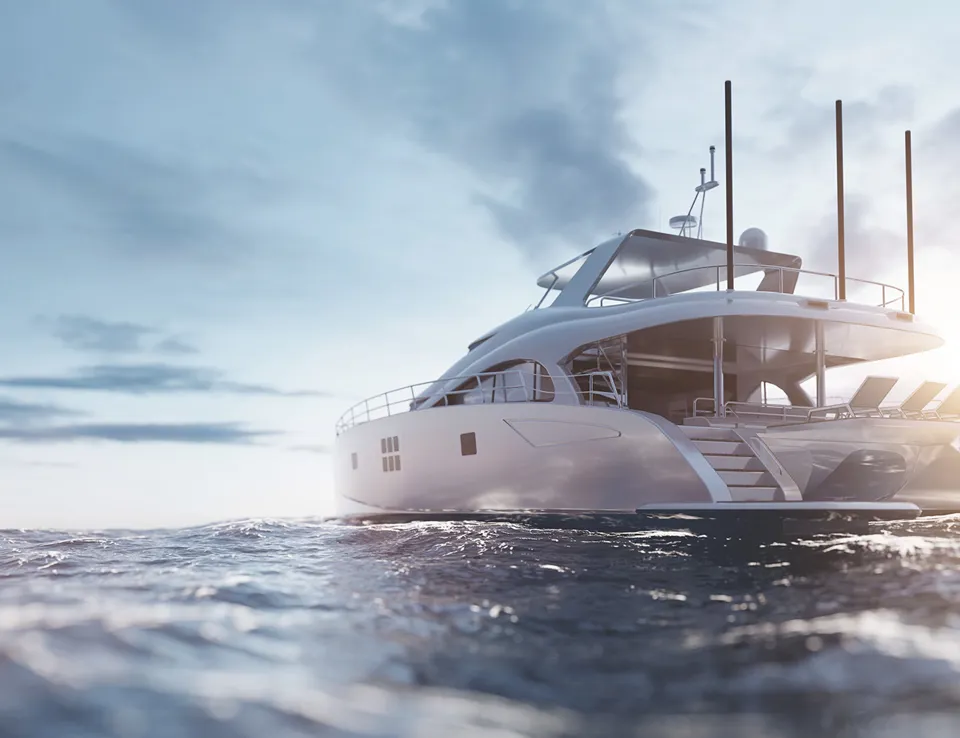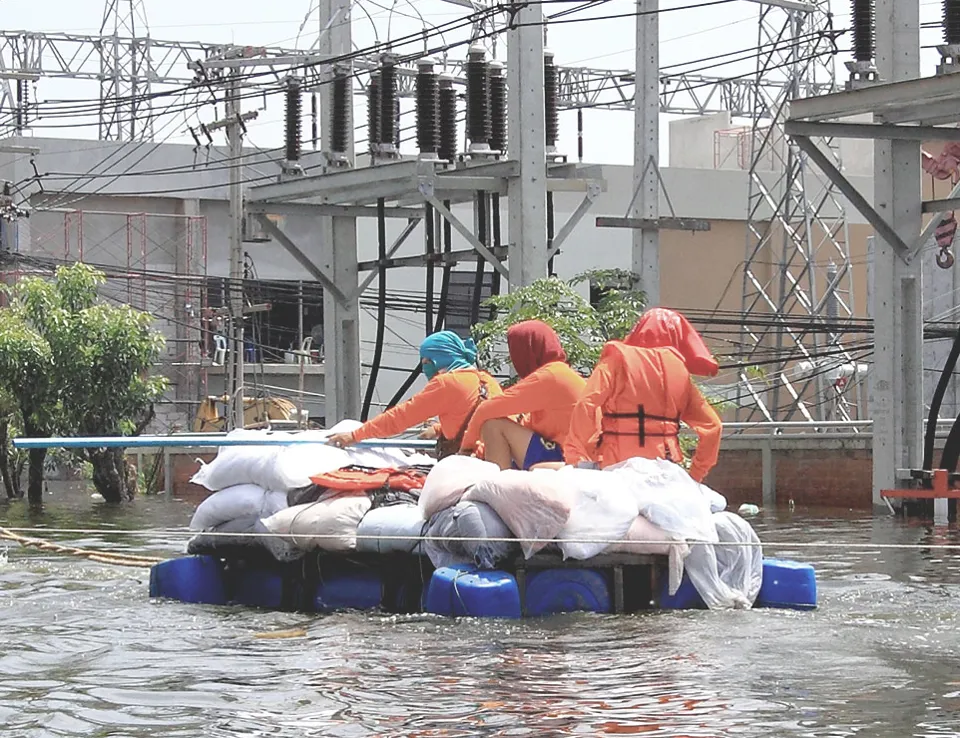Accelerating Zero-Emission Shipping
14 Feb 2025
Ricardo maritime policy expert, Matthew Moss, explains how various economic mechanisms could be used to stimulate the production and use of cleaner fuels across the maritime sector.
The International Maritime Organization's target of achieving net zero by, or around, 2050 for the maritime sector is not as far away as it might seem. To meet this target, global shipping must transition to zero, or near-zero, greenhouse gas (GHG) fuels at an unprecedented rate with 5% (striving for 10%) of all maritime fuel meeting this criterion by 2030.
Building supply and demand for these fuels well in advance of 2050 is critical to ensuring the target is achievable whilst also reducing the cost penalty for delayed response.
However, the transition will require significant investment across the value chain, from fuel production and distribution to the retrofitting and construction of new vessels. The associated costs underscore the increasing need for green finance solutions tailored to the maritime sector – something Ricardo has explored recently in a study for the European Commission.
As such, we should look towards policy mechanisms with an economic element, such as the EU ETS and IMO measures, for assistance in overcoming the high-cost barriers associated with zero and near-zero-GHG fuels.
Generating revenue from maritime policies
Maritime inclusion in the EU Emission Trading Scheme (ETS) came into force in January 2024. By requiring ship operators to purchase emissions allowances, the EU ETS aims to incentivise emission reduction in the sector. The scheme covers 50% of emissions from voyages between EU and non-EU ports and 100% of emissions from voyages within the EU. It includes carbon dioxide (CO2), methane (CH4), and nitrous oxide (N2O) emissions from ships above 5000 gross tonnage.
The EU ETS operates on a polluter-pays principle, where operators monitor and report their emissions annually, paying for allowances that correspond to their emissions. In 2024, ship operators had to surrender allowances for 40% of their emissions, increasing to 70% in 2025 and reaching 100% by 2026. If ship operators exceed their allowances, they must purchase additional permits or face penalties, generating significant revenue for the EU.
The revenues generated are used to support individual Member State climate-related activities and, to a lesser extent, the EU Innovation Fund (~6% in 2023). However, could some of these revenues be diverted towards the implementation of zero or near-zero-GHG fuels?
In parallel, the FuelEU Maritime regulation came into force in January 2025. One part of this regulation aims to limit the annual GHG intensity of energy used by ships that dock in European ports. Applicable to vessels over 5,000 GT, in 2025 a 2% reduction in GHG emissions must be achieved, this target increases over time to an 80% reduction in GHG emissions in 2050. Penalties for non-compliance will provide an additional source of revenue.
At the international level, the IMO is working toward implementing mid-term measures to achieve its net zero GHG strategy. The measures include a technical element in the form of a global fuel standard which will limit the GHG intensity of marine fuels and an economic element which is yet to be agreed on. The economic element may take the form of a global carbon levy or a feebate scheme, both revenue-generating mechanisms.
A global carbon levy would impose a fixed price per tonne of GHG emissions, providing a predictable revenue stream while incentivising operators to reduce emissions. A feebate scheme, on the other hand, would impose fees on high-emission ships while rewarding those with lower emissions, effectively encouraging cleaner practices. Both measures, if enacted, could generate substantial revenues on a global scale, offering a new source of funding to drive decarbonisation efforts in the maritime industry.
“Decisions taken at the IMO in April 2025 will shape the future of maritime decarbonisation. A critical output will be determining how revenues from global policies are used to advance zero/near-zero-GHG shipping.
”
Matthew Moss
Maritime Sustainable Transport Senior Consultant

How policy revenues can drive adoption of zero-emission maritime fuels
Zero and near-zero GHG fuels are essential for achieving global maritime decarbonisation. However, the current cost of production and lack of bunkering infrastructure are significant barriers to adoption. Cost and supply chain uncertainty have so far proven limiting factors for many ship operators to make the switch away from conventional fossil fuels. Financial support and incentives are required to accelerate the switch to low-carbon fuels via initiatives such as:
- Subsidies for alternative fuels: providing direct financial support to reduce the cost difference between zero/near-zero-GHG and fossil fuels.
- Infrastructure development: investing in bunkering infrastructure to enable the global availability of zero/near-zero-GHG fuels.
- Research and development: supporting innovation to improve the efficiency and scalability of zero/near-zero-GHG fuel production.
Report insights: accelerating zero/near-zero-GHG fuel adoption
Our recent report, Study on Support Schemes for RFNBOs In Shipping and Aviation conducted for Transport & Environment (T&E), underscores the transformative potential of revenue recycling in the maritime sector. The study explored the use of a Contract for Difference (CfD) scheme to accelerate the uptake of renewable fuels of non-biological origin (RFNBOs) up to 2035.
Our modelling showed that utilising just 25% of the revenue generated from the maritime elements of the EU ETS could support RFNBO adoption beyond baseline expectations during the early years of the scheme. This increased utilisation of RFNBOs not only helps achieve immediate decarbonisation targets but also establishes a market demand for greater production levels. Over time, economies of scale can reduce costs further, accelerating adoption and creating a positive feedback loop for zero-emission fuel uptake.
Crucial discussions are set to happen at the IMO in April 2025 - decisions that will shape the future of maritime decarbonisation. A critical output will be to determine how revenues from global policies are used to advance zero/near-zero-GHG shipping.
As highlighted in our study, one viable route to incentivise the production and use of zero and near-zero-GHG fuels would be to utilise the revenue generated from policy measures such as the EU ETS. These revenues could subsidise the cost, bridging the price gap and reducing the financial barrier for ship operators to begin utilising these fuels at scale. The question remains of how to secure financing for the shipbuilding community however, as neither party can progress without the other - the complexity of the sector requires fuels, ports and vessels to evolve in synchronization.
Whatever the outcome of the IMO discussions, it is clear that strategically directed financial support is necessary to overcome the barriers to adoption of zero or near-zero GHG fuels to enable the sector to achieve its targets and empower its stakeholders to thrive in the future low-carbon economy.




 Ricardo Sustainability, Clean Energy and Environment
Ricardo Sustainability, Clean Energy and Environment




